Fiber Collimators
A fiber collimator is a core passive optical device, mainly used to realize bidirectional optical path conversion of "divergent light transmitted in optical fiber → parallel light" or "external parallel light → optical fiber coupled light". It is a key component in fields such as optical communication, laser applications, and spectral analysis to ensure the stability of optical paths and the efficiency of optical energy transmission.
VenusLab-UWB Aspherical Collimator
The technical combination of high-precision, wide-wavelength, and focus-adjustable
- Single-lens Aberration Correction Design
- Wide-Wavelength High-Efficiency Transmission
- Multi-Wavelength Adaptive Adjustment
- Miniaturized Packaging Advantage
- Multi-Scenario Compatibility
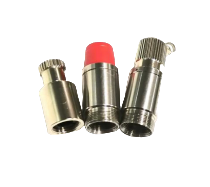
VenusLab-UWB Aspherical Collimator
High resolution: Small spot size, with PCB laser direct imaging (LDI) accuracy reaching submicron level;
No intermediate loss: Double-sided anti-reflective coating, transmittance > 95%, energy utilization rate better than multi-element spherical collimators;
Multifunctional integration: Supports TTL modulation and TEC cooling, adapting to the high-speed exposure requirements of lithography equipment.

VenusLab-UWB Aspherical Collimator
High color purity: Achieving the blue primary color of the Rec.2020 wide color gamut in laser TVs and projectors;
Concentrated energy density: The photon flux density of 450nm laser is high, and the exposure speed of photoresist is 30% faster than that of 532nm;
Strong environmental adaptability: The reflectivity of the silver film is >98% (at 450nm), and it is resistant to humidity and high temperature (≤200℃).
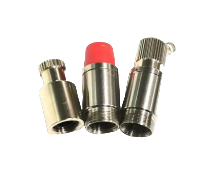
VenusLab-UWB Aspherical Collimator
Its excitation efficiency for the fluorescent dye FITC is 30% higher than that of the 520nm (collimator), and the signal-to-noise ratio (SNR) of the flow cytometer is improved by 2dB.
The 0.15 low numerical aperture (NA) version (with an effective focal length, EFL = 15mm) has a beam stability of <1% (over 8 hours), making it suitable for long-duration experiments.
In biological imaging, hemoglobin scattering is reduced by 25% compared with the 450nm (collimator), resulting in higher blood vessel imaging contrast.
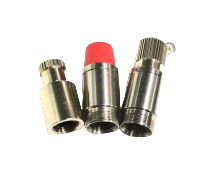
VenusLab-UWB Aspherical Collimator
High contrast in biological imaging: 520nm green light has low scattering on hemoglobin and mitochondrial pigments, resulting in high image signal-to-noise ratio;
Excellent device integration: Ф12mm micro package (such as base optics F1120 series), suitable for the compact optical path of flow cytometers;
Multi-interface compatibility: Optional FC/PC, FC/APC, SMA905 connectors for flexible connection to different optical fiber systems.

VenusLab-UWB Aspherical Collimator
In laser display, its color gamut coverage reaches 92% of the Rec.709 standard, and its red saturation is 15% higher than that of the 660nm (collimator).
The spot uniformity of the 0.18 numerical aperture (NA) version (with an effective focal length, EFL = 12mm) is >90%, making it suitable for large-area material processing.
Its absorptivity for plastics is 40% higher than that of the 520nm (collimator), and the acrylic cutting speed is increased by 25%.
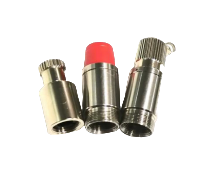
VenusLab-UWB Aspherical Collimator
Its selective absorption of epidermal pigments (such as freckles and senile lentigines) is 20% higher than that of the 638nm (collimator), and side effects are reduced by 30%.
Its absorption efficiency in the lymphatic system is 15% higher than that of the 850nm (collimator), and the detumescence treatment course is shortened by 25%.
In red light therapy, when used in combination with the 850nm (collimator), it can achieve "superficial + deep-layer" synergistic treatment.

VenusLab-UWB Aspherical Collimator
Its penetration depth into skin/muscle reaches 5-10μm, which is twice that of the 520nm (collimator), making it suitable for in vivo deep imaging.
In Raman spectroscopy, its fluorescent background is two orders of magnitude lower than that of the 532nm (collimator), with a substance identification accuracy of >99%.
The gold-plated film has a reflectivity of >95% at -196℃ to 600℃, making it suitable for extreme environment experiments.

VenusLab-UWB Aspherical Collimator
In data centers, the short-distance (<500m) transmission cost is 40% lower than that of the 1310nm (collimator), and the energy consumption is reduced by 25%.
Its smoke penetration capability is stronger than that of the 520nm (collimator), and the detection range of the security LiDAR reaches 500m.
Compared with the 1310nm (collimator), the optical module price is 30% lower, making it suitable for high-density integration.
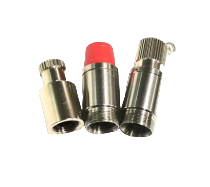
VenusLab-UWB Aspherical Collimator
In medical applications, the ablation speed of adipose tissue is twice as fast as that of the 1064nm (collimator), and the operation time is shortened to 15 minutes.
When used as a fiber amplifier pump source, its conversion efficiency reaches 80%, which is 5% higher than that of the 976nm (collimator).
The thermal damage range to surrounding tissues is <0.5mm, and its safety is superior to that of CO₂ lasers.

VenusLab-UWB Aspherical Collimator
In industrial micromachining, the ceramic drilling speed is three times faster than that of CO₂ lasers, with an edge roughness of <0.5μm.
The biological tissue penetration depth reaches 20mm, which is 1.5 times that of the 980nm (collimator), making it suitable for deep tumor treatment.
The contrast ratio for ferrous metal marking is 50% higher than that of the 638nm (collimator), and there is no consumable loss.

VenusLab-UWB Aspherical Collimator
For medium-distance (500m-20km) transmission, its cost is 30% lower than that of the 1550nm (collimator), offering the best cost-effectiveness.
Its dispersion performance is superior to that of the 850nm (collimator), and the transmission distance of 10Gbps signals reaches 40km (without dispersion compensation).
It has strong anti-electromagnetic interference capability, with a bit error rate (BER) of <1e-12 in industrial high-voltage environments.
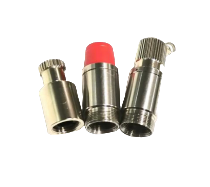
VenusLab-UWB Aspherical Collimator
For long-distance transmission (>40km), no repeaters are required, reducing node costs by 50% compared with the 1310nm (collimator).
In quantum key distribution (QKD), the single-photon attenuation is 30% lower than that of the 1310nm (collimator), and the key generation rate is 25% higher.
Its human eye safety threshold (100mW) is 10 times that of visible wavelengths, requiring no safety interlocks.
Single-mode fiber collimator
Multi-wavelength coverage + low-loss performance + Flexible adaptation
- Wide-wavelength high-precision collimation
- Low-loss and highly reliable transmission
- Flexibly adaptable to multiple scenarios

Single-Mode Fiber Collimator
- The only collimator in the entire series that covers the 405nm near-ultraviolet band, meeting the needs of exclusive ultraviolet light scenarios
- 3.0μm ultra-fine fiber core diameter + ≤0.5mrad low divergence angle, with strong beam focusing, suitable for high-precision ultraviolet light regulation
- Magnet-free shell design avoids the impact of electromagnetic interference on ultraviolet light signals and ensures the stability of test data

Single-Mode Fiber Collimator
The only blue laser collimator in the entire series that achieves an ultra-small size of Φ3.2×10.4mm, suitable for devices with compact spaces;
Minimum waist diameter of 0.25mm (the smallest in the entire series), with high focusing accuracy of the blue light beam, suitable for micro-scale light spot applications;
The blue light has moderate penetrability, and low-loss transmission ensures the utilization rate of laser energy, making it suitable for medium and low-power blue laser scenarios.
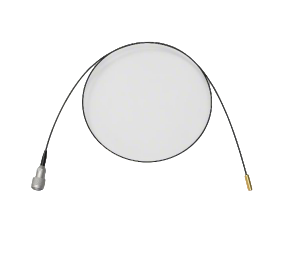
Single-Mode Fiber Collimator
488nm is the golden wavelength for biological fluorescence detection, and the low-loss characteristic of the collimator ensures the efficiency of fluorescence signal collection;
The Φ4×14mm specification has a waist of 1.0mm and a divergence angle ≤0.5mrad, with excellent beam stability, suitable for long-term fluorescence testing;
It has strong adaptability to multiple sizes and can be compatible with laboratory desktop spectrometers and industrial-grade testing equipment.
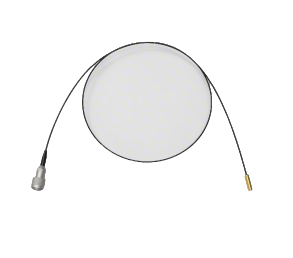
Single-Mode Fiber Collimator
The 520nm green laser has high human eye sensitivity, and the collimator's low divergence angle (≤0.5mrad) ensures precise control of beam visualization;
The Φ12×16.5mm specification has a waist of 0.65mm, balancing the spot size and transmission distance, making it suitable for medium-distance laser applications;
Green light has a low scattering coefficient, and low-loss transmission improves signal stability in outdoor/complex environments.
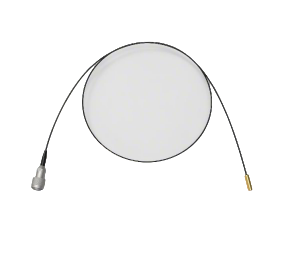
Single-Mode Fiber Collimator
A 4.0μm core diameter is compatible with medium-power red lasers (≤500mW), avoiding optical path damage caused by high power with small core diameters;
The Φ4×14mm specification has a waist size of 1.2mm (the largest waist size in the entire red wavelength range), making it suitable for wide-spot red laser applications;
Red light has a low air attenuation rate, and low-loss transmission ensures the stability of long-distance signals.

Single-mode fiber collimator
The 660nm deep red laser has stronger penetration than 520/638nm, and its low-loss transmission makes it suitable for applications in complex environments (such as dust and mist);
The Φ4×14mm specification has a waist of 0.4mm (the smallest waist in the red wavelength band), with high beam focusing accuracy, suitable for precise ranging;
The 4.0μm core diameter is compatible with medium-power lasers, balancing transmission efficiency and equipment safety.
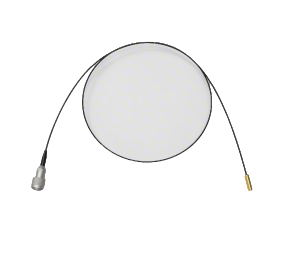
Single-mode fiber collimator
785nm is the golden wavelength for Raman spectroscopy analysis. The collimator's low loss and low divergence angle (≤0.5mrad) ensure the signal-to-noise ratio of Raman signals;
The 5.0μm core diameter is compatible with high-power (≤1W) near-infrared lasers, avoiding fiber ablation under high power;
Near-infrared light has strong anti-interference ability, making it suitable for testing complex samples (such as those containing water or fluorescent impurities).
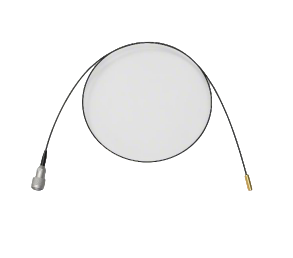
Single-mode fiber collimator
850nm is the mainstream wavelength band for short-distance optical communication, and the collimator's multiple divergence angle options are adapted to meet different transmission distance requirements;
The Φ3.2×10.4mm specification has a divergence angle of ≤2.5mrad, balancing cost and transmission efficiency, making it suitable for large-scale industrial applications;
5.0μm core diameter + low-loss transmission, adapted to medium and high-power (≤800mW) near-infrared lasers.
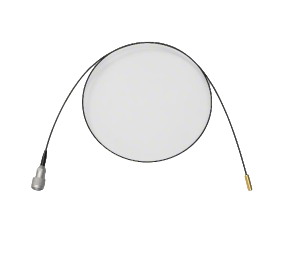
Single-mode fiber collimator
The maximum core diameter of 6.5μm is compatible with high-power (≤2W) 980nm lasers, providing safe transmission for fiber laser pump sources;
The dual-specification divergence angle is ≤2.5mrad (Φ3.2/Φ4), which reduces the energy density when high-power lasers are focused and avoids optical path damage;
The absorption coefficient in the 980nm band is low, and low-loss transmission ensures pumping efficiency.
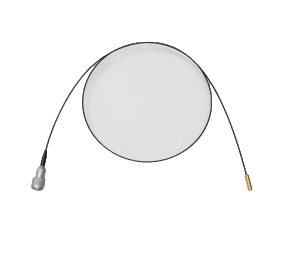
Single-mode fiber collimator
The 1064nm laser has strong penetrability and significant thermal effect, and the low-loss transmission of the collimator ensures the efficiency of laser processing/ranging;
The Φ12×16.5mm specification has a waist diameter of 0.8mm (the largest waist diameter in the near-infrared band), which meets the wide spot requirement of high-power laser processing;
The 5.5um core diameter balances power transmission and spot precision, being compatible with both processing and communication scenarios.

